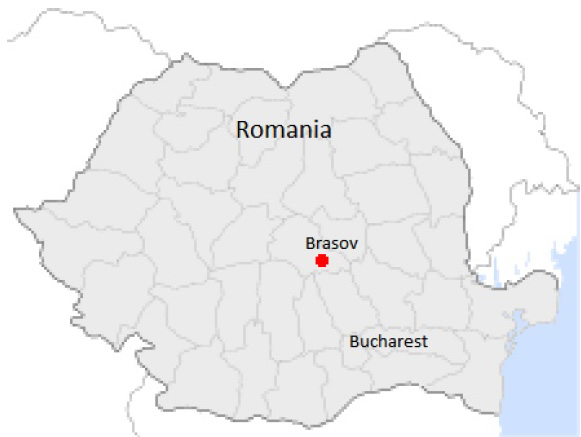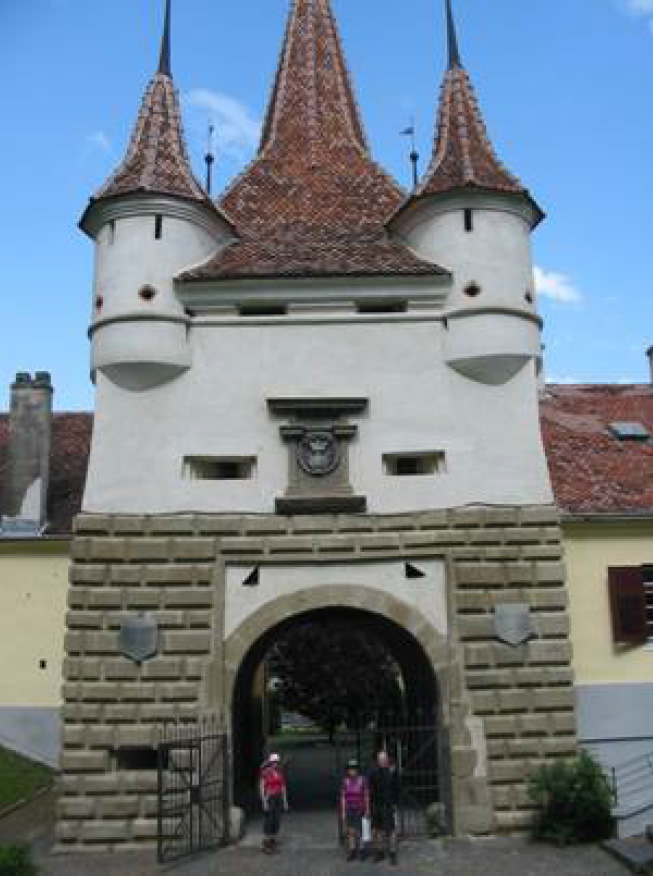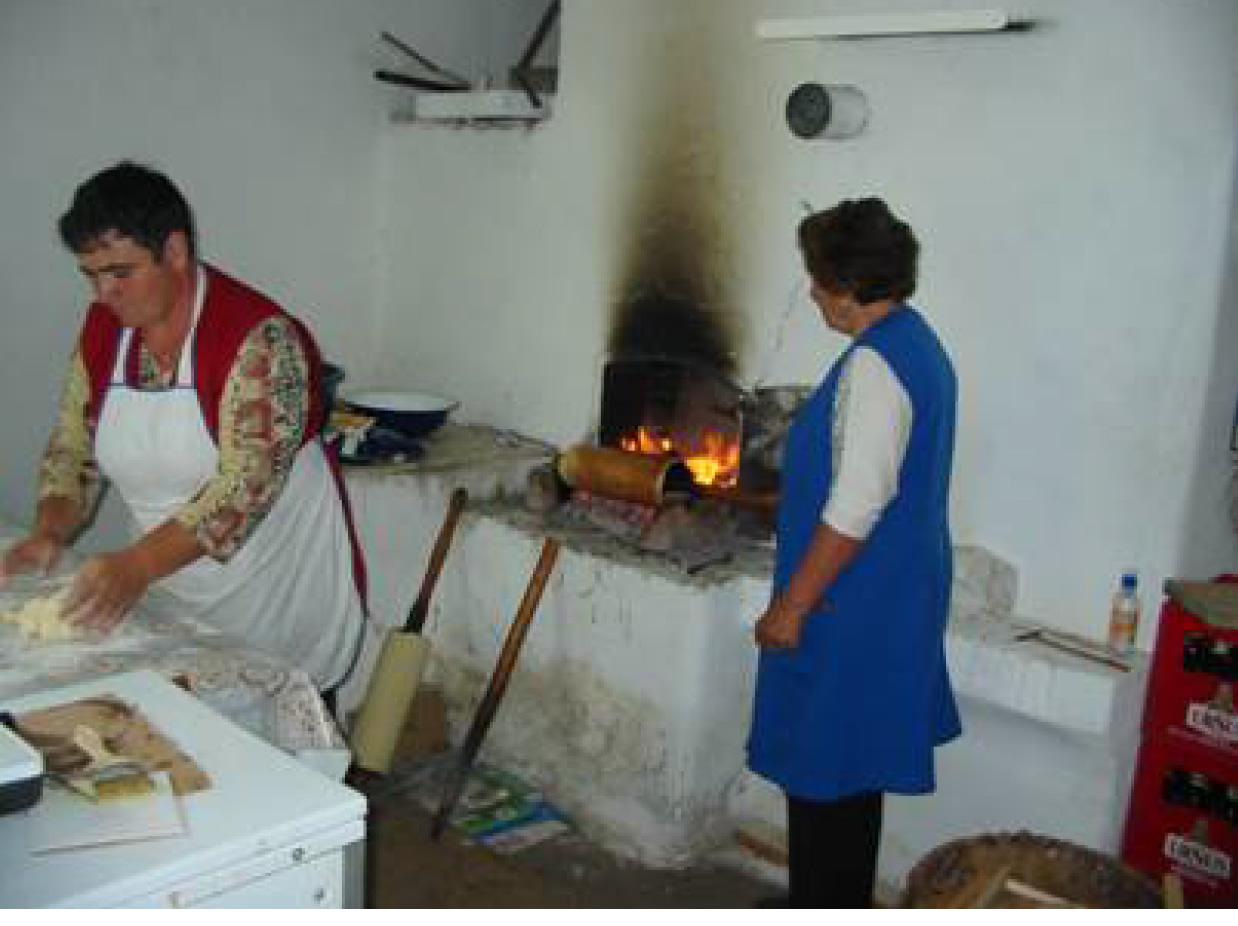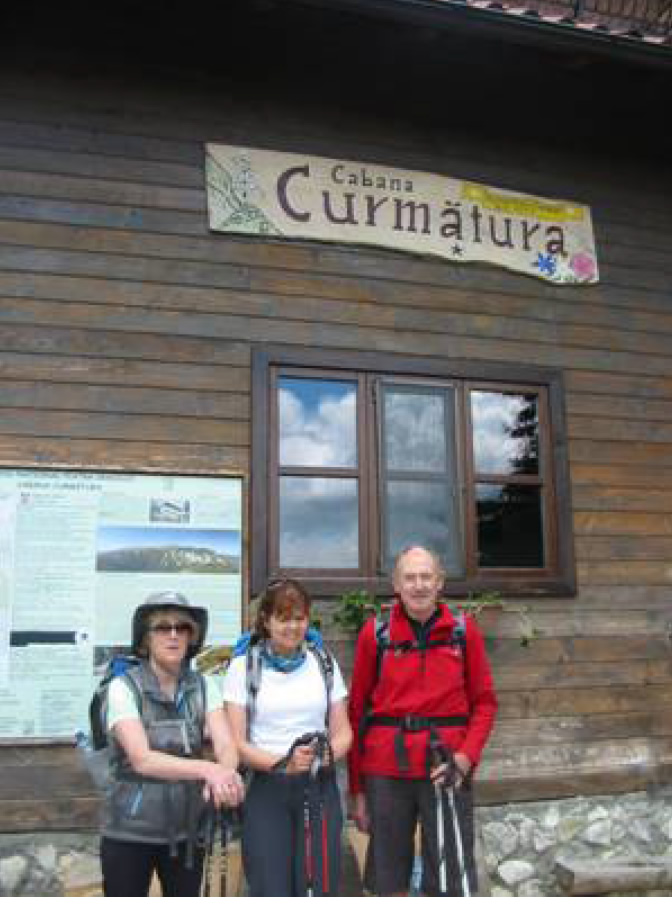The start of our week-long sojourn in Romania began on Sunday, June 29th, in the old-world village of Măgura in the heart of the Piatra Crăiului National Park. The Piatra Crăiului, which translates as the "Rock of the Kings", is a mountain range in the southern Carpathians. almost smack in the middle of Romania.
Măgura is a charming village, 36 km. from Brasov, where the traditional ways of life are embedded into the modern Romanian lifestyle. Old-style hay forking and hand_milking are still to be seen in the surrounding fields. Frequently, upon setting out in the mornings, we met local villagers heading to our Villa Hermani guesthouse with freshly gathered wild produce for our evening meal. Food at the guesthouse was very good, and our hosts, Katherina and Hermann, were very particular about serving as much local produce as possible - home-made breads, cheeses, yoghurt and honey, as well as delicious berbal drinks.

We set out on our first morning on a tour of the village with Thomas, our guide for the week. Throughout our stay, Thomas gave us great insight into the history and culture of Romania.
The next day we ventured further afield, with a tour of the surrounding area and a visit to a nearby monastery, where we observed local artists decorating the interior. Following this, we visited a bat cave in Peştera. As it was daytime, there was little or no bat activity.

The Piatra Crăiului National Park is a haven for wild life, with over 45 brown bears in the area. Thomas warned us about the frequency of wolf and wild dog attacks on shepherd dogs, as well as the occasional hiker(!), and, in the following days, we noticed that he was armed with a large knife to protect us. That day passed uneventfully!
In the evening, after an early dinner, we made a trip to a bear hide (lookout) in Stramba valley, where we had the opportunity to observe bears at their ritual evening feeding sessions, organised by the rangers. The rangers do this daily to discourage the bears from roaming the outskirts of nearby Braşov in order to raid the dustbins. That evening we observed up to eight bears and their cubs feeding near the bear hide.
The Count's Castle

On day two we set out through high pastures and meadows for the town of Bran, which is famous for its castle dating back to 1382 - more popularly known as Dracula's castle. After a morning walk through the rain-drenched beech forests, we toured the castle. The rain did not let up much that day and we returned to Măgura via Zărnesti thoroughly wet.
Our third day was a trip to Braşov, followed by a visit to a fortified church in the village of Cristian. Here we had the opportunity to scale the heights of the bell tower and were rewarded with great views over the valley. In Braşov, we toured the Black Church dating from 1383. Its name derives from its scorched appearance after a fire in 1689. We also had time for shopping and a stroll through the historic town.
On the fourth day we hiked from Măgura through the Prăpăstiile Zărnestilor gorge to the Curmătura Cabana and on to Piatra Mica in the Piatra Crăiului mountains. This is an area rich in flora and fauna and we were well rewarded with sightings of a black stork and numerous alpine swifts nesting in the high rocks. Scenes from the film Cold Mountain were shot along the gorge route and, today, you can stilI feel a sense of remoteness there.

Our fifth day was a walk from Măgura to Vulcan which took us up into the high meadows where the sheep graze all summer, and the shepherds, who live in the most primitive conditions, guard their flocks from wolves. In Vulcan, we were treated to a local speciality - a sugar-coated confection that resembled a crispy crêpe - baked in the traditional way over an open fire. A gathering of locals, including our guide's family, was taking place, and we had some very interesting conversations regarding the future of the area in the face of economic uncertainty and emigration - a topic not unfamiliar to rural Ireland either.
Our final day's walk took us to the Bucegi mountains in the Prahova valley. Unfortunately, due to the cool, damp weather, the mountains were fogbound. As a result, we were denied panoramic vistas of some of the most spectscular scenery in the Carpathians, including its highest peaks, which are in the 2,000 meter range. However, the walking was great, if brief, taking us past the Sphinx rock at Babele and on to the Caraiman Cross, with spectacular abysses en route. It was too short a visit overall as the cable car times were restricted and we had to descend all too early.

It was a great week - full of interest and fun. We would highly recommend a visit there.
- Ita, Gerry and Mary.
